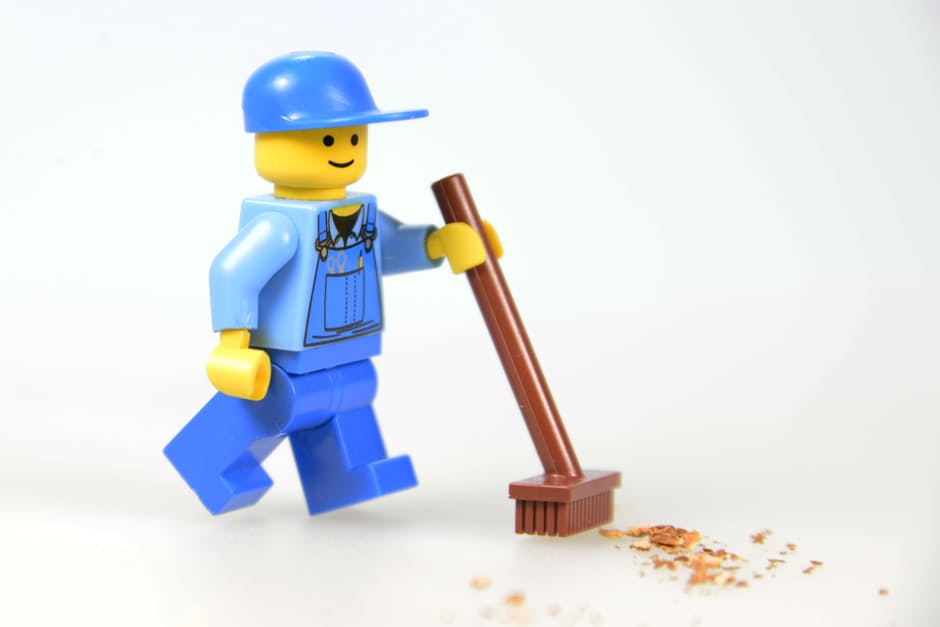If you’ve noticed some damp patches on the walls or ceilings of your home, you need to check the timber beams in the loft space. If sections of timber are damp or wet, try to find out the cause before the wood becomes infected with dry rot, wet rot or one of the other fungi that love to wreak havoc.
What are the causes of timber decay?
Timber decay, or wood rot, is caused by a biological attack of the wood by particular types of fungus. These fungi can lie dormant in wood for years and will only present themselves when the right conditions occur. What’s needed to trigger the fungi is moisture, oxygen and nutrients – with moisture being the most important element. If the moisture content in a wooden beam is at least 20% and the wood has been wet for some considerable time, the fungi will bloom and start to cause decay.
What are the different types of fungi?
The most common fungi found in damp wood are Dry Rot (Serpula lacrymans), Wet Rot or cellar fungus (Coniophora puteana), and Black Mould or pore or mine fungus (Poria vaillantii). Numerous other fungi also occur, some of which are linked to the decay in window and door frames.
Serpula lacrymans, or Dry Rot, is the most serious fungal decay and can spread onto and ravage the surrounding timbers. Less serious is Wet Rot, which occurs more often. Here, the decay is normally confined to just the wet area of the timber.
How the fungi attack
The timbers in buildings decay and rot because of adverse environmental conditions such as water leaks and prolonged damp or wetness. Many organisms use timber as food – the most common and destructive of these being Dry Rot, Wet Rot, Deathwatch Beetle and the Common Furniture Beetle.
The fruiting bodies of the different maturing fungi produce millions of microscopic spores which are dispersed in the air. If these spores fall onto wet, untreated wood they germinate and form clumps of threads known as mycelium. Mycelium develops inside the wood and breaks it down for food. The timber normally darkens in colour and takes on a cracked appearance – the growing fungi will cause timbers to lose their strength and become unsafe.
Building inspection
If you discover any dampness or fungal decay in your home, contact an established building pathologists inspect the building without delay to find out how and where the water is coming from.
Roof – External Inspection
- Check for blocked or broken gutters, especially in hard-to-reach areas of your roof
- Check that there are no broken, displaced, missing or loose roof tiles
- Check that all the flat roof surfaces are in good order
- Make sure there are no problems with the chimneys and/or flashings
Roof – Internal Inspection
- Check all the timbers in the roof space to make sure they’re dry
- Check for the cause of any dampness on the walls
Exterior Walls and Fittings
- Make sure there’s no deterioration or damage to the mortar in the joints of the brickwork
- Make sure there are no blocked air bricks
- Check that the damp-proof course is in good order
- Check that there are no leaks or overflows from water tanks and cisterns
- Check that there are no broken or damaged water and/or waste pipes
- Check the flashings around all the window frames
Environmentally-safe inspection and treatment
It’s possible to conduct a safe, non-destructive property inspection by using air-scenting search dogs. These animals have been specially trained to sniff out active timber decay. Inspections using fibre optics and other electronic precision-measurement devices can also be used. In so doing, you avoid the use of chemical treatments and save money.
Be careful if you use insecticidal fungicidal chemicals because these will result in the loss of some sections of timber and are expensive and hazardous to the environment and to humans.
Post-treatment
Once any timber decay repair work has been completed, it is recommended that you install an electronic system to monitor the moisture content in and around the problem areas of your home. Any building defects that may lead to leaks or prolonged dampness can then be detected early and summarily dealt with. These highly-efficient monitoring systems help to reduce your home’s insurance risk and also keep down building maintenance costs.



 Bitcoin
Bitcoin  Ethereum
Ethereum  Tether
Tether  XRP
XRP  Solana
Solana  USDC
USDC  Cardano
Cardano  TRON
TRON  Lido Staked Ether
Lido Staked Ether  Avalanche
Avalanche  Toncoin
Toncoin